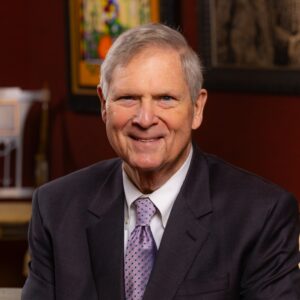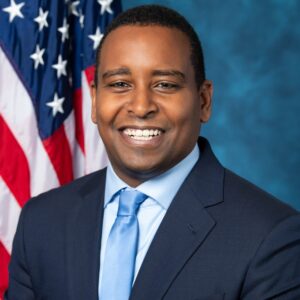Career Readiness: A Path Forward to Position Our Kids for Success (Part 2)
By Berrick Abramson
Last week, I shared my thoughts on the state of Career and Technical Education (CTE) and the broader efforts in K-12 education to ensure our kids are “career ready” whether they plan to enter the workplace directly after high school or pursue either a two-year degree, specialized certification, or a four-year college degree. While there are important strides being made and a number of encouraging efforts in pockets across the country, we still have a long way to go to ensure all kids are prepared for success.
Rethinking career readiness requires smart assessment of current conditions and meaningful collaboration among a broad group of stakeholders and leaders. To chart a path forward, there needs to be a shared understanding of the world our kid are entering. Equally important is understanding that there is neither one simple solution that fits every child and community nor are these solutions that leaders from any single field — be it education, policy, or the private sector — can solve alone.

Technical or Hard Skills & Knowledge include everything from Science, Technology, Engineering, and Math (STEM) to the arts, skilled trades, mechanics of operating a small business, journalism, and entry-level health care among many others. It’s important to note that within all of these, addressing the opportunities in broad fields is a smart first step but not itself sufficient to prepare students for the actual needs and opportunities. The Brookings Institution’s Jonathan Rothwell found that a high number of STEM jobs remained vacant because of a mismatch in the specific skills. In a field like computer science for example, a base level knowledge of website and application coding or database management may be an appropriate foundation. But, to position students for success, local leaders will need to know more about the specific local needs and hard-to-find skills. Rothwell for example found companies struggling to find candidates with skills coding Ruby, Python, PERL, and other highly specific needs. Similar specificity of skills likely exists in most communities for jobs in health care, agriculture, business, or other skilled trades and the best — if not only — way for educators to know is through close collaboration with leaders in their community.
Personal & Professional or Soft Skills are all of the non-technical skills young adults will need to enter and succeed in the workplace ranging from professional networking to teamwork and leadership skills. Google recently shared surprising results from an analysis of 15 years of data about employee hiring, promotion, and success. Google’s Project Oxygen found that of the eight critical qualities of their top employees, the top seven were soft skills like communication and critical thinking. Hard skills and STEM expertise were last on the list of eight. In a follow-up, Project Aristotle looked at data on team success at Google. In another surprise, the analysis found that the strongest new ideas and work came from the so-called “B Teams,” comprised of those who excel at a variety of soft skills like curiosity, generosity, and other aspects of emotional intelligence.
In addition to the hard and soft skills students will need to succeed in most fields, the simple but critical recognition of the pace of change is critical to preparing kids for success. America Succeeds, a network of nonpartisan, business-led policy and advocacy organizations, recently released The Age of Agility. The report, which examined workforce trends, pressures from automation and global competition, sounded the call to business, education, and government leaders that, “Students exiting the pre-K-12 education system will need to be prepared for radical societal and workplace changes if they are to have any shot at thriving personally or professionally.” The report’s conclusions included: “Because we can’t predict the exact skills needed to succeed in tomorrow’s jobs, our charge is equip students with the tools of agility and inspire a mindset of lifelong learning.” Education leaders and policymakers would be well-served to have that guidance in mind as they tackle the career readiness challenge.
There are simple steps we think local education, municipal, and business leaders can take. The following high-level steps are part of the roadmap at the core of work Keystone is doing with district and city leaders:
- Inventory & Assess Current Offerings in K-12 education, through businesses, nonprofits, or government agencies to provide students work-based learning and career skills or knowledge.
- Identify & Understand Workforce Needs including hard, soft, and specific skills needed for entry-level positions in the local workforce and for career advancement success.
- Align Offerings to Opportunity by revising existing and creating new courses, partnerships, and programs of study.
- Commit to Continued Collaboration to continuously assess success and outcomes of programs, respond to evolving needs and incorporate feedback from all involved.
As education system leaders, elected officials, and policymakers undertake this work, they would be well served to design a process that answers five key questions specific to their local context:
- What fields offer good to high paying jobs for candidates with specialized knowledge or skills?
- What courses, programs of study, or work-based learning opportunities are offered that prepare students for those opportunities?
- Do all students have access to the program (enrollment capacity, transportation, etc.)?
- What are the soft skills necessary for students to be successful in the workplace regardless of their post-secondary plans?
- How are we (or can we) integrate instruction that addresses all of these needs at the earliest point in our students’ education as part of a developmental continuum?
In charting a course to answer these questions and act on the findings, there are several key facts that should be kept in mind: Neither education system leaders, the business community or economic development offices can answer these questions alone. It requires close collaboration between all of these. Career readiness education program development cannot be approached as a one-and-done proposition. Partnerships must be created that are responsive to the evolving needs and opportunities.
Most of this work is best done by leaders and organizations at the city, county, and district level. It may make sense based on local context for districts and cities to form regional collaborative efforts. There’s also an important role for state leaders. State Education Agency (SEA) leaders can leverage and support these efforts by convening district leaders to share best practices or workshop challenges, provide support, resources, and technical assistance to district leaders and can serve a critical role advocating for district efforts with policymakers and other state officials. SEA chiefs can also help coordinate with the governor’s office, state economic development, and workforce agencies. These chiefs are also likely to find value collaborating with other state chiefs through existing efforts like the Council of Chief State School Officers’ (CCSSO) Career Readiness Initiative and other efforts to workshop areas of practice and to consider multi-state, regional, and neighboring state factors.
It’s possible — if not likely — that adapting K-12 education to the world that exists today and will unfold tomorrow will call for even broader rethinking of the fundamental structure of our public schools. As education leaders begin to answer the question of how to truly prepare kids for this fast-changing world, they will likely also have to explore questions like who should be delivering instruction, how should that instruction be delivered, what does a classroom or school need to look like, and how should students advance through their education. None of those are easy questions with simple answers. Fortunately, there are a lot of smart people and organizations digging into those like the Donnell-Kay Foundation’s Reschool initiative (among many others). To truly prepare for the future though, we’ll need even more people at the table — parents and entrepreneurs, students and business leaders, artists and tradespeople, teachers and scientists and government leaders from every level and agency.
All of this may sound daunting but, when broken down into actionable steps, is manageable for those who prioritize it. With how much is at stake, getting it right is also, I believe, this generation of leaders’ “Moonshot Moment” and imperative. I have every confidence that, working together, across fields and ideologies, communities across the country will rise to the occasion.
On last week’s “Ed Policy Chalk Talk,” I offered two questions for readers and colleagues:
Employers: What are the skills (hard or soft) that are the hardest for you to find in new employees or that you expect to be most in-demand in the coming years?
Families: What has been your experience with the quality of and access to CTE or career preparation programs?
This week, I’ll add a third question for everybody:
What skills or knowledge do you wish you’d had more opportunity to develop in high school to prepare you for a career?
Berrick Abramson is Senior Policy Director at Keystone Policy Center where he leads our education practice. He has more than 20 years of experience in education and public policy. Berrick began his career in Silicon Valley where he worked in corporate finance and was a principal in a number of start-up and growth stage companies.


 Shelby Coffey III is a distinguished journalist, media executive, and thought leader whose career has helped shape the landscape of American news and public discourse. Over several decades, Coffey has held some of the most influential roles in journalism, including serving as editor of the Los Angeles Times, executive vice president of ABC News, and deputy managing editor of The Washington Post. His editorial leadership extended to key roles as president of CNN Financial News, editor of the Dallas Times Herald, and U.S. News & World Report.
Shelby Coffey III is a distinguished journalist, media executive, and thought leader whose career has helped shape the landscape of American news and public discourse. Over several decades, Coffey has held some of the most influential roles in journalism, including serving as editor of the Los Angeles Times, executive vice president of ABC News, and deputy managing editor of The Washington Post. His editorial leadership extended to key roles as president of CNN Financial News, editor of the Dallas Times Herald, and U.S. News & World Report. Effective March 1, 2025, Thomas J. Vilsack, former United States Secretary of Agriculture and Governor of Iowa, became the first Chief Executive Officer for the World Food Prize Foundation. In this new role, Governor Vilsack is focusing on expanding the Foundation’s global network, and will further position the Foundation as a leader in addressing global food and nutrition insecurity, continuing his lifetime of public service.
Effective March 1, 2025, Thomas J. Vilsack, former United States Secretary of Agriculture and Governor of Iowa, became the first Chief Executive Officer for the World Food Prize Foundation. In this new role, Governor Vilsack is focusing on expanding the Foundation’s global network, and will further position the Foundation as a leader in addressing global food and nutrition insecurity, continuing his lifetime of public service. Jerry Steiner has spent 40 years involved in agriculture following growing up on a Wisconsin dairy farm. He began his career with Monsanto, in multiple business leadership roles. From 2003-2013 he served as a member of the Executive team, as the company’s Executive Vice President of Sustainability and Corporate Affairs. He led the company’s global Government, Public and Industry Affairs teams across the 70 countries where Monsanto conducts business. This experience got Jerry connected to the Keystones centers work in agriculture. Key among his responsibilities were shaping the company’s public policy and building partnerships aimed at helping farmers around the world produce more food, while conserving valuable resources like water and energy. Two unique partnership that developed under his leadership were drought tolerant corn with 5 African countries, CIMMYT and the Gates foundation, and a building a sustainable business model in Brazil with the value chain leading to significant multi-company investment and soybean varieties that can protected themselves.
Jerry Steiner has spent 40 years involved in agriculture following growing up on a Wisconsin dairy farm. He began his career with Monsanto, in multiple business leadership roles. From 2003-2013 he served as a member of the Executive team, as the company’s Executive Vice President of Sustainability and Corporate Affairs. He led the company’s global Government, Public and Industry Affairs teams across the 70 countries where Monsanto conducts business. This experience got Jerry connected to the Keystones centers work in agriculture. Key among his responsibilities were shaping the company’s public policy and building partnerships aimed at helping farmers around the world produce more food, while conserving valuable resources like water and energy. Two unique partnership that developed under his leadership were drought tolerant corn with 5 African countries, CIMMYT and the Gates foundation, and a building a sustainable business model in Brazil with the value chain leading to significant multi-company investment and soybean varieties that can protected themselves. Jennifer Morris is the Chief Executive Officer of The Nature Conservancy, leading a team of nearly 6,000 staff working in more than 80 countries and territories tackling the dual crises of the
Jennifer Morris is the Chief Executive Officer of The Nature Conservancy, leading a team of nearly 6,000 staff working in more than 80 countries and territories tackling the dual crises of the  Congressman Joe Neguse represents Colorado’s 2nd District in the U.S. House of Representatives. He was elected to his first term in November 2018, becoming the first Black Member of Congress in Colorado history. In December 2022, Rep. Neguse was elected by his colleagues to serve as Chair of the Democratic Policy and Communications Committee (DPCC), becoming the first Coloradan to serve in a senior elected leadership role in the House in over 85 years. He serves on the Natural Resources and Judiciary Committees, and was also appointed by House Minority Leader Hakeem Jeffries to serve as one of four Democrats on the prestigious Rules Committee. Rep. Neguse serves as Ranking Member on the House Subcommittee on Federal Lands, which he previously Chaired in the 117th Congress.
Congressman Joe Neguse represents Colorado’s 2nd District in the U.S. House of Representatives. He was elected to his first term in November 2018, becoming the first Black Member of Congress in Colorado history. In December 2022, Rep. Neguse was elected by his colleagues to serve as Chair of the Democratic Policy and Communications Committee (DPCC), becoming the first Coloradan to serve in a senior elected leadership role in the House in over 85 years. He serves on the Natural Resources and Judiciary Committees, and was also appointed by House Minority Leader Hakeem Jeffries to serve as one of four Democrats on the prestigious Rules Committee. Rep. Neguse serves as Ranking Member on the House Subcommittee on Federal Lands, which he previously Chaired in the 117th Congress. Llewellyn King was born in Southern Rhodesia, now Zimbabwe. He went into journalism as soon as he turned 16, stringing for Time magazine and United Press in Africa.
Llewellyn King was born in Southern Rhodesia, now Zimbabwe. He went into journalism as soon as he turned 16, stringing for Time magazine and United Press in Africa. Steven Williams is the Chief Executive Officer of PepsiCo North America, overseeing a more than $48 billion business that spans PepsiCo’s Foods and Beverage operating units. His leadership encompasses more than 125,000 associates and over 900 locations across the U.S. and Canada. Steven joined PepsiCo in 2001 as part of PepsiCo’s acquisition of the Quaker Oats Company, which he joined in 1997, and has held leadership positions of increased responsibility since.
Steven Williams is the Chief Executive Officer of PepsiCo North America, overseeing a more than $48 billion business that spans PepsiCo’s Foods and Beverage operating units. His leadership encompasses more than 125,000 associates and over 900 locations across the U.S. and Canada. Steven joined PepsiCo in 2001 as part of PepsiCo’s acquisition of the Quaker Oats Company, which he joined in 1997, and has held leadership positions of increased responsibility since.